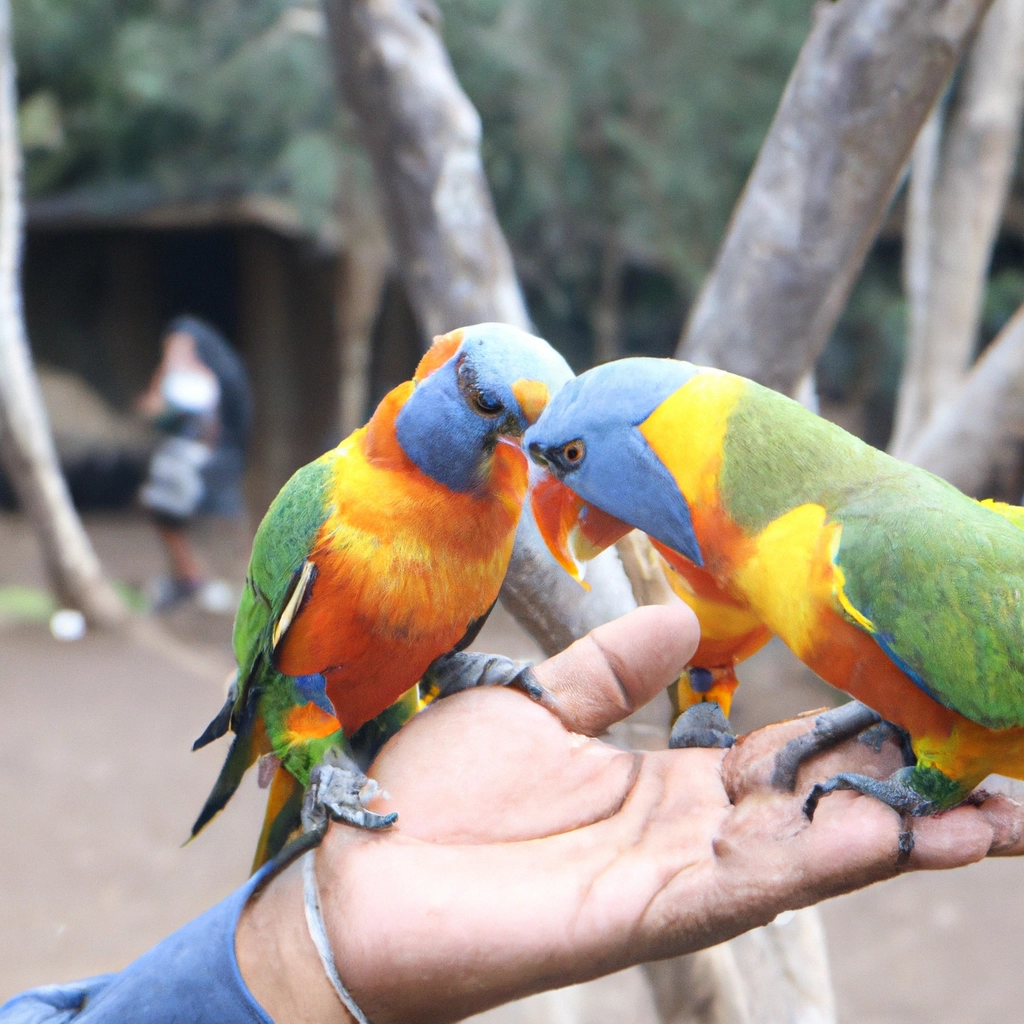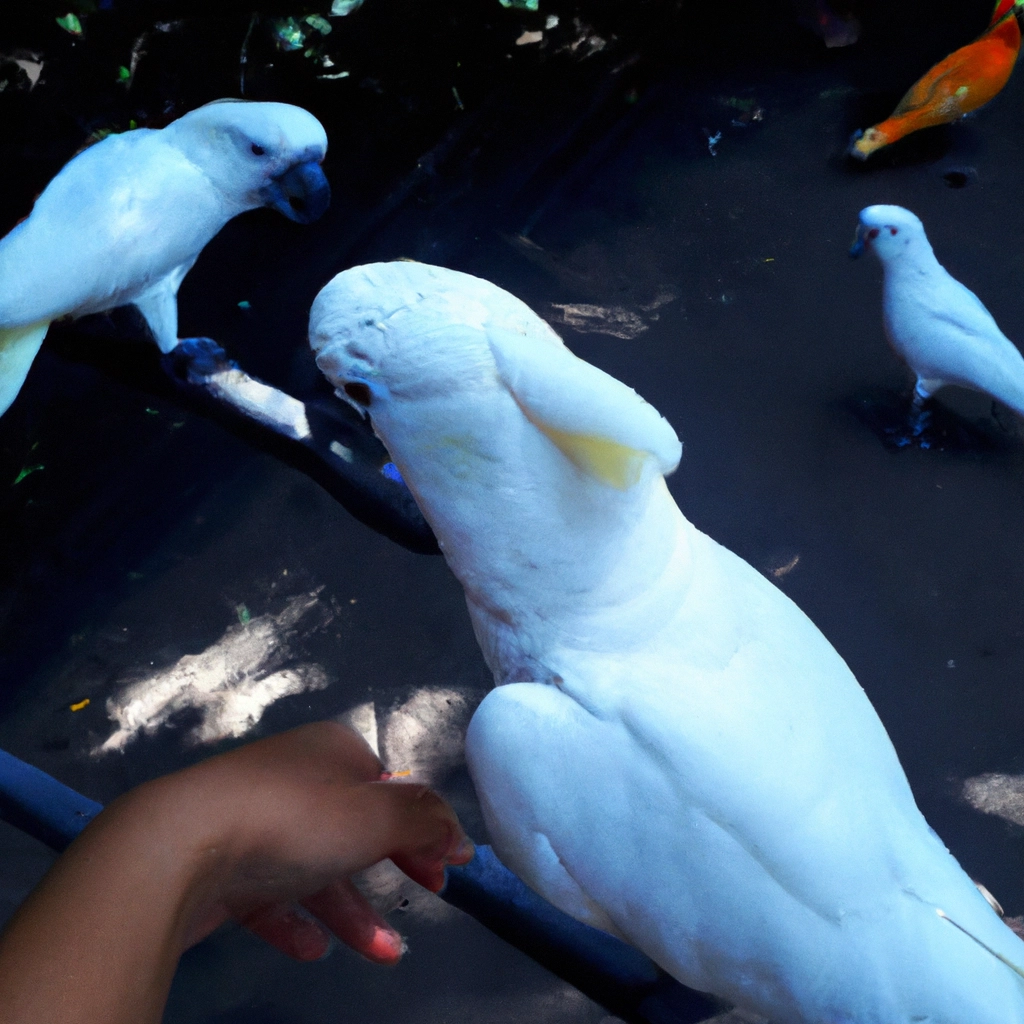| Bird Species | Preference for Beak Rubbing |
|---|---|
| African Grey Parrot | Enjoys gentle beak rubs as a sign of affection |
| Cockatiel | Some cockatiels enjoy beak rubs, while others may not be as receptive |
| Budgerigar | Usually enjoys gentle beak rubs, often as part of bonding and grooming behavior |
| Cockatoo | Many cockatoos enjoy beak rubs as a form of social interaction and bonding |
| Macaw | Some macaws enjoy beak rubs, but it varies among individuals |
A flash of color caught my eye one sunny afternoon as a hummingbird darted in to steal a sip from the garden’s bounty of flowers. This tiny avian acrobat wasn’t just a mere passerby in the dance of nature; it was an individual with its own set of behaviors and preferences. This moment sparked a curiosity in me—do these feathered friends, and birds in general, actually enjoy it when their human companions gently stroke their beaks? This article delves into the engaging world of birds to discover whether beak caresses are as pleasant for them as they may seem to us.
From the parrots of pop culture fame to the sparrows perched on city wires, these creatures fascinate with their array of behaviors. My interest in avian affections has led me to many discussions, from ornithologists to bird enthusiasts alike. With a desire to uncover the mysteries of beak-rubbing, let’s take a peek into the window of understanding our flying friends.
This exploration isn’t just about satisfying a simple curiosity. It’s about fostering a deeper connection with the avian species that soar above us. As we seek to understand their behaviors, perhaps we can learn to better coexist and appreciate the nuances of their presence in our own lives.
Understanding Bird Behavior
In my quest, I’ve poured over scientific research detailing the social interactions and behaviors of birds. These studies show that birds can be quite social creatures, partaking in a myriad of interactions that are essential for their survival and wellbeing. Beak contact, for instance, seems to be a natural occurrence between bonded pairs or during parental care. But what about the human-bird dynamic?
Recalling my own experiences with pet birds, it became clear that each bird exhibits distinct preferences. The way a cockatiel gently nuzzled against my palm while enjoying a moment of bonding contrasted with a finch’s elusive nature. It seems that much like humans, birds can have different levels of comfort with physical contact.
One particular memory stands out—the story of a resilient rescue parakeet, Ellie, who came into my life years ago. Initially wary of human touch, Ellie gradually became fond of gentle beak rubs after many months of patient interaction. This journey was an intimate insight into the world of building trust with avian companions.
Beak-rubbing in the Wild
Stepping out of the confines of human homes and into the wild opens up an even broader perspective. Observing birds in their natural habitat has taught me that social behaviors like beak rubbing are part and parcel of avian interaction. A pair of doves preening one another, for instance, offers a glimpse into the tender side of bird conduct.
Scholarly articles illustrate that various species, from parrots to penguins, engage in beak rubbing, also referred to as “billing,” as part of their courtship or bonding rituals. However, understanding these interactions in the wild differs significantly from interpreting a pet bird’s behavior in a home setting.
In those fleeting moments of observing wild birds, I’ve had the privilege of seeing firsthand how spontaneous acts of beak contact occur between feathered partners. These actions are fascinating and telling of the complex social structures that exist within the avian world.
Beak-rubbing in Captivity
Speaking with several bird owners added additional layers to my understanding. Many relayed that their avian companions displayed clear signs of enjoyment when receiving affectionate beak strokes. It seems that for some birds, this engagement mirrors the natural grooming behavior they would exhibit in the wild.
Watching captive birds in places such as sanctuaries and homes offer a unique opportunity to study their reactions. When approached with love and care, I witnessed how these creatures responded positively to beak rubs, tilting their heads and closing their eyes in contentment. Stroking their beaks sometimes helps in reducing their stress or keeping them engaged, essential for captive birds’ wellbeing.
Reflecting on these encounters, it’s clear that while not all birds will appreciate the same level of intimacy, many can indeed find comfort and pleasure in the experience, provided they feel safe and at ease with their human companions.
Conclusion
Our journey through the beak-rubbing habits of birds, both wild and domestic, illustrates a beautiful aspect of avian life. It’s a reminder that these creatures we often admire from afar have their own set of preferences and behaviors that merit our respect.
Personally, this exploration into the beak-rubbing phenomenon has reinforced the significance of understanding and respecting animal behavior. It is about striving to be more attuned to their signals and their unique ways of communication.
I invite you all to watch the birds around you, whether they are your feathered companions at home or the visiting wild birds in your garden. Observe, appreciate, and always approach them with a gentle respect. Who knows, you might be fortunate enough to share a special moment with these incredible creatures. For more insights into bird behavior, feel free to explore our other articles on related topics.
Frequently Asked Question
-
What are some signs that indicate a bird enjoys having its beak rubbed?
Some signs that indicate a bird enjoys having its beak rubbed include leaning into the rub, closing its eyes, making contented noises, or even gently preening your finger. These behaviors suggest that the bird is experiencing pleasure and relaxation from the beak rub. Additionally, if the bird seeks out and repeatedly presents its beak to you for rubbing, it’s a clear indication that they enjoy the sensation.
It’s important to pay attention to the bird’s body language and reactions during the beak rubbing to ensure that it’s a positive experience for them. If the bird shows signs of discomfort, such as moving away, flinching, or vocalizing in distress, it’s best to stop and give them space. Every bird is different, so it’s essential to observe and understand your specific bird’s preferences and boundaries when it comes to beak rubs.



